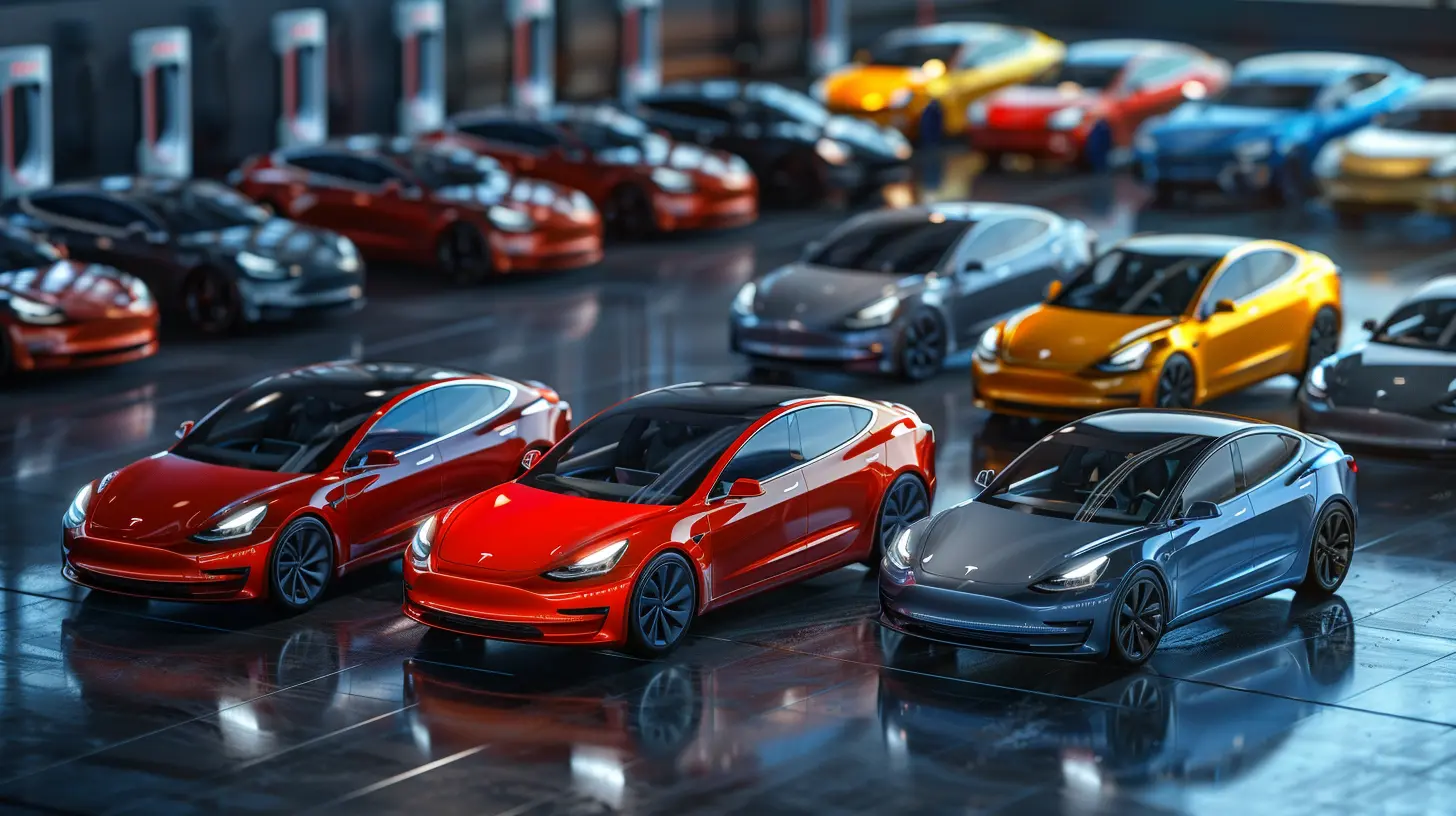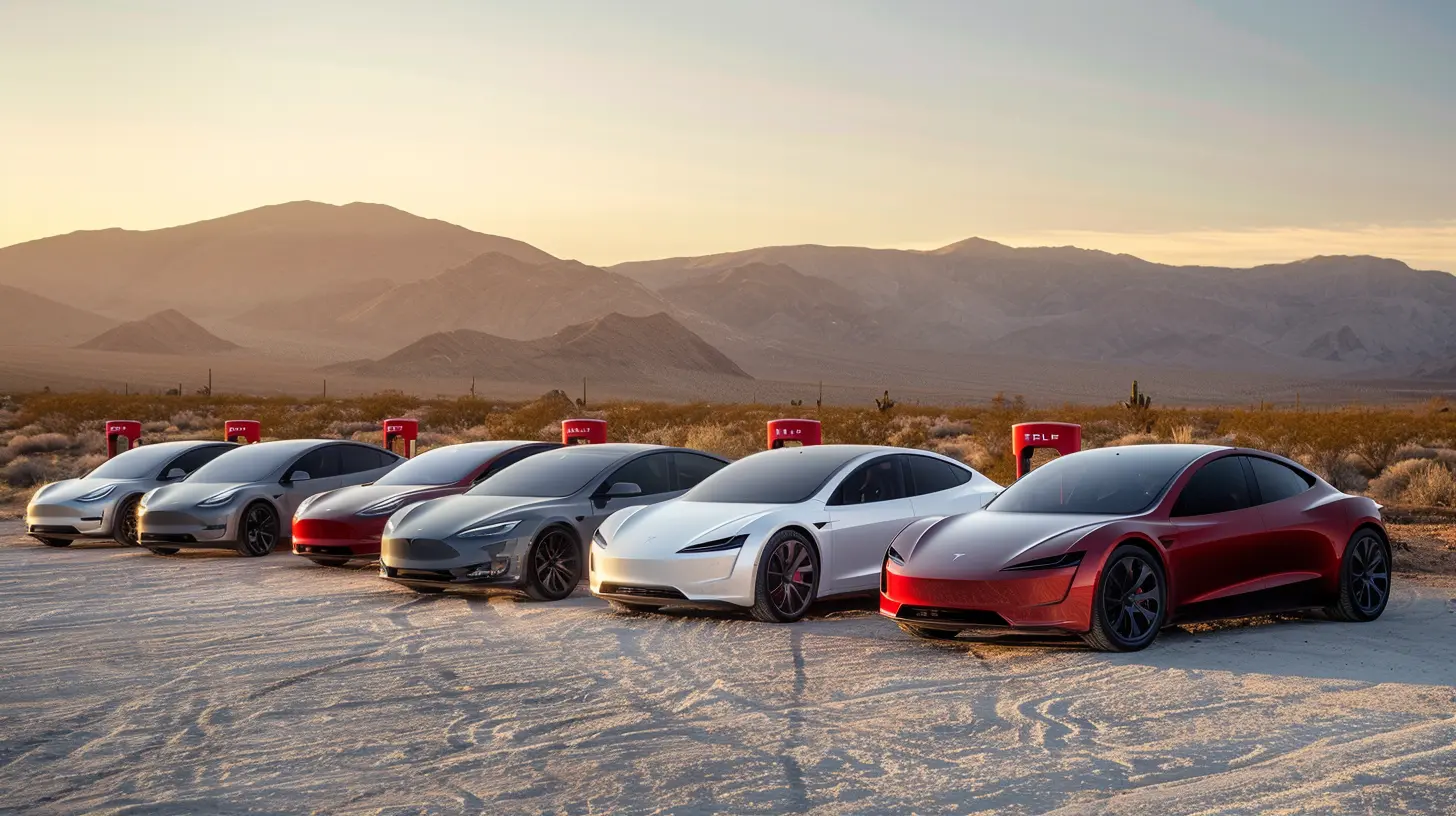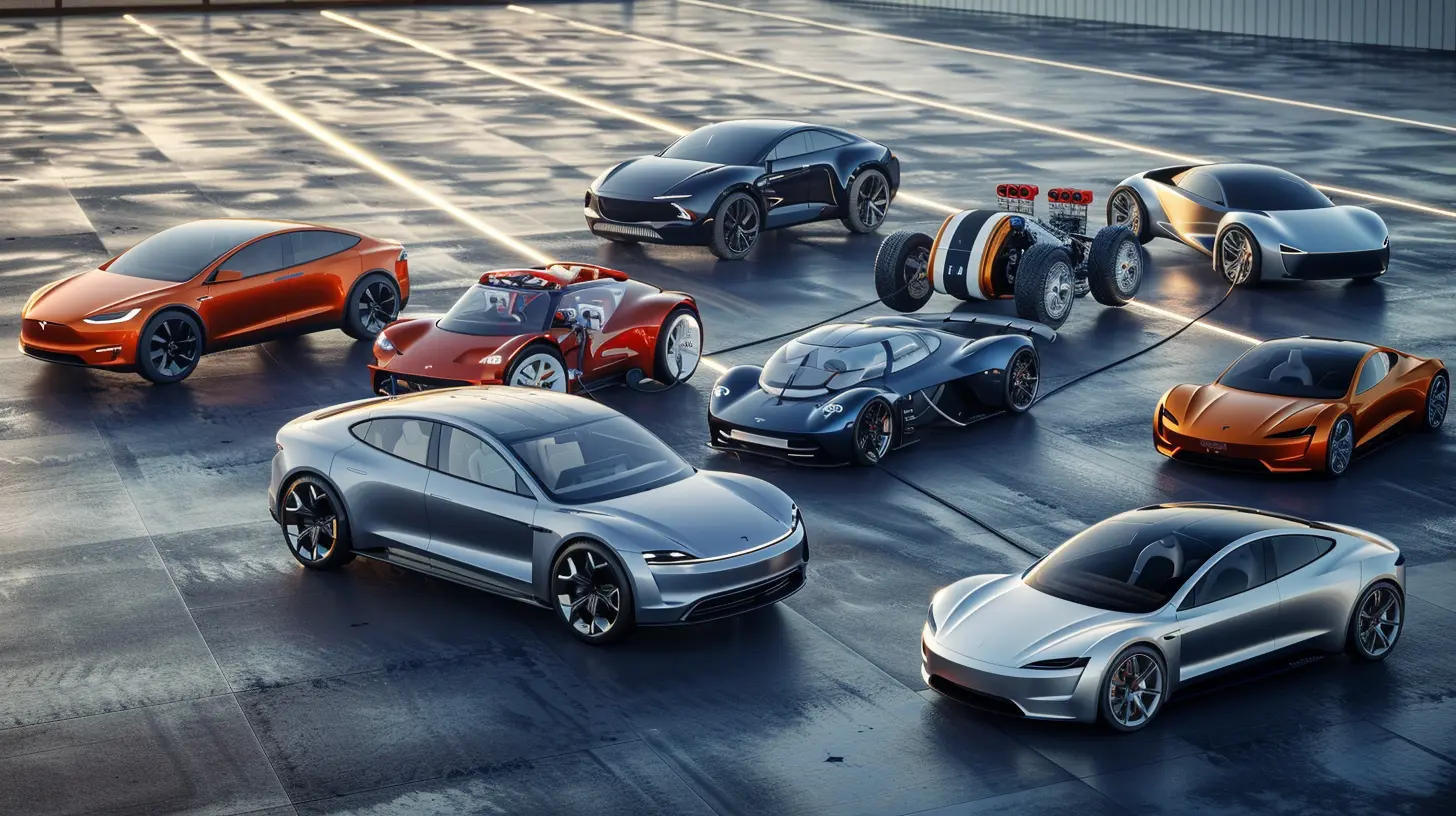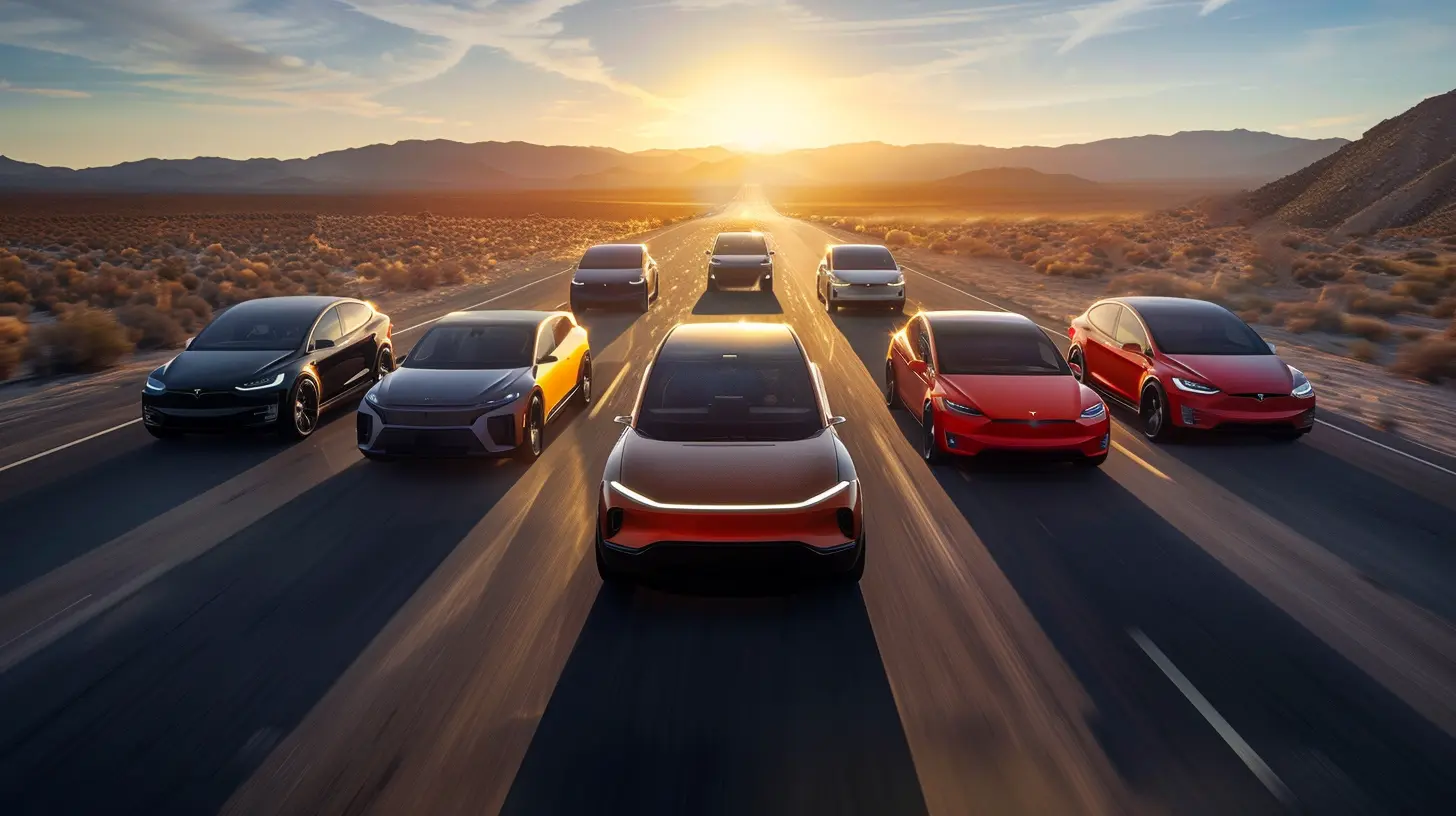The Evolution of EV Range: From Early Models to Today’s Capabilities
9 August 2025
Electric vehicles (EVs) have come a long way, haven’t they? A decade ago, if you wanted to buy an EV, you had to prepare yourself for severe range anxiety. You’d be lucky to get 100 miles on a single charge. Fast forward to today, and we’re talking about EVs that can travel over 400 miles before needing a recharge. But how did we get here? What advancements have allowed EVs to compete with traditional gas-powered vehicles?
In this article, we'll take a deep dive into the evolution of EV range—examining the technology, breakthroughs, and innovations that have made modern electric cars more practical than ever.

The Early Days: Limited Range and High Skepticism
When electric vehicles first entered the consumer market, they faced numerous challenges—limited battery capacity, high prices, and a lack of charging infrastructure. Let’s rewind to the early 2000s when EVs were considered niche rather than mainstream.The First Mainstream Attempt: Tesla and the Roadster
One of the first breakthrough EVs was the Tesla Roadster, released in 2008. It was a game-changer simply because it proved that electric cars could be cool, fast, and relatively practical. The Roadster used lithium-ion batteries, and for the first time, an EV could achieve more than 200 miles on a single charge. That might not sound like much today, but back then, it was revolutionary.Other Early Models Struggled
While Tesla made headlines, most early EVs fell short. Cars like the Nissan Leaf (2010) and the Mitsubishi i-MiEV (2009) only managed around 75 to 100 miles per charge. This limited usability meant that EVs were primarily seen as city cars, unsuitable for road trips or long commutes.The skepticism surrounding EVs was real. People worried about battery degradation, the scarcity of charging stations, and the high cost of replacement batteries. The internal combustion engine had dominated for over a century—why would anyone switch?

Battery Breakthroughs: The Turning Point for EV Range
If we had stuck with the same battery technology from the early EVs, we wouldn’t be where we are today. So, what changed?Lithium-Ion Batteries Reign Supreme
Early electric cars relied on lead-acid and nickel-metal hydride batteries, which were heavy and inefficient. The shift to lithium-ion technology made a huge difference. These batteries were lighter, stored more energy, and had a longer lifespan, significantly improving range and performance.Solid-State Batteries: The Future of EVs?
Today, researchers are working on solid-state batteries, which could be a game-changer. These batteries promise:- Higher energy density (leading to even longer ranges)
- Faster charging speeds
- Increased safety (less risk of overheating or catching fire)
It’s only a matter of time before solid-state batteries make their way into mainstream EVs, pushing the boundaries of what’s possible.

The Rise of Long-Range EVs
By the mid-2010s, automakers realized that range was a key selling point. The higher the range, the more likely consumers were to ditch their gas-powered cars.Tesla Leads the Way
Tesla continued to set the benchmark for EV range. The introduction of the Model S in 2012 was a big deal because it could travel over 265 miles per charge—a significant leap from previous models. Fast forward to today, and the Tesla Model S Long Range version can hit 405 miles on a single charge.Other Automakers Step Up
Realizing that Tesla had a lead, legacy automakers started investing heavily in EV technology:- Chevrolet Bolt EV (2017) – 238 miles per charge
- Hyundai Kona Electric (2018) – 258 miles per charge
- Ford Mustang Mach-E (2021) – Up to 312 miles per charge
- Lucid Air (2022) – A whopping 516 miles per charge!
The numbers speak for themselves. EVs are no longer limited to short distances—they can easily handle road trips and daily commutes without breaking a sweat.

Charging Infrastructure: The Key to Eliminating Range Anxiety
Even with longer ranges, charging infrastructure needed to evolve. A long-range EV isn’t very useful if you can’t find a charging station when you need one. This has led to massive investments in charging networks across the world.Fast Charging Revolution
EV owners once had to wait several hours to recharge their cars fully. Thankfully, DC fast charging has changed the game. With ultra-fast chargers, EVs can regain 80% charge in as little as 20-30 minutes.Some examples of fast-charging networks include:
- Tesla Supercharger Network – Over 50,000 chargers globally
- Electrify America – Thousands of stations across the U.S.
- Ionity (Europe) – High-speed charging for long-distance travel
Wireless and Solar Charging?
Imagine never having to plug in your EV. While still in its early stages, wireless charging technology is being tested, allowing EVs to charge just by parking over a special pad. Meanwhile, solar-powered EVs, like the Aptera, aim to charge themselves using sunlight. Who knows? Maybe soon, we’ll never have to worry about charging at all!What’s Next? The Future of EV Range
So, where do we go from here? If EVs are hitting 500+ miles today, what will the future look like?1,000-Mile EVs?
With advancements in battery technology, we could see EVs boasting 1,000-mile ranges within the next decade. Companies like Mercedes-Benz and Kia are already teasing concept cars that push towards this goal.Better Efficiency, Not Just Bigger Batteries
Bigger batteries aren’t the only solution. Automakers are also improving efficiency by:- Reducing vehicle weight using lightweight materials
- Enhancing aerodynamics to cut down energy consumption
- Improving regenerative braking to capture more lost energy
Integration with Renewable Energy
Imagine your EV not only storing energy but also sending electricity back to the grid when needed. This is known as Vehicle-to-Grid (V2G) technology, and it could turn EVs into moving power stations, helping stabilize the electric grid.
Final Thoughts: EVs Have Officially Arrived
Looking back, it’s incredible how far we’ve come. From early EVs struggling to pass 100 miles, to modern-day electric cars that give gas vehicles a run for their money—this transformation has been nothing short of revolutionary.The days of range anxiety are fading, and with each passing year, EVs are becoming more practical, efficient, and affordable. So, if you’re still on the fence about making the switch to electric, maybe it’s time to start considering the possibilities. After all, the future of transportation is electric—it’s just a matter of how fast we get there.
all images in this post were generated using AI tools
Category:
Electric VehiclesAuthor:

Vincent Hubbard
Discussion
rate this article
1 comments
Taylor Luna
Great overview of EV range advancements! Exciting times for electric vehicles!
August 25, 2025 at 3:07 AM

Vincent Hubbard
Thank you! I'm glad you enjoyed the overview. Exciting times indeed for the future of electric vehicles!


